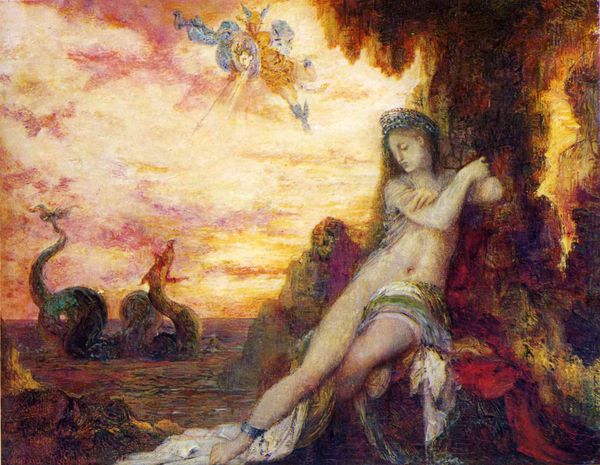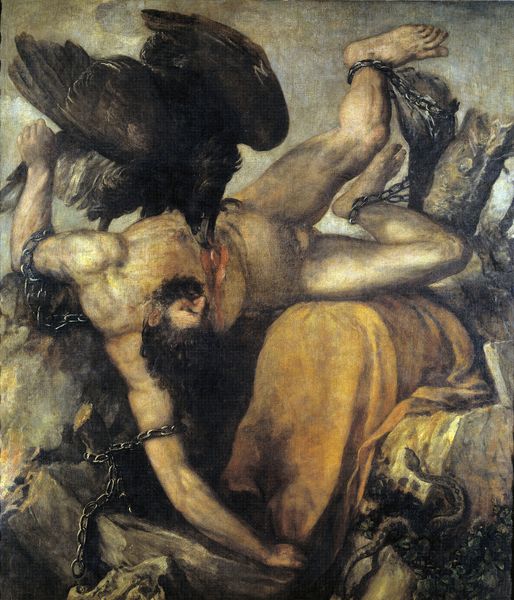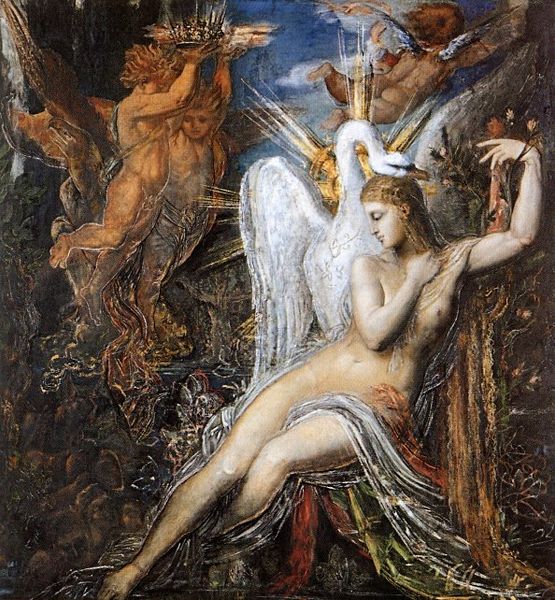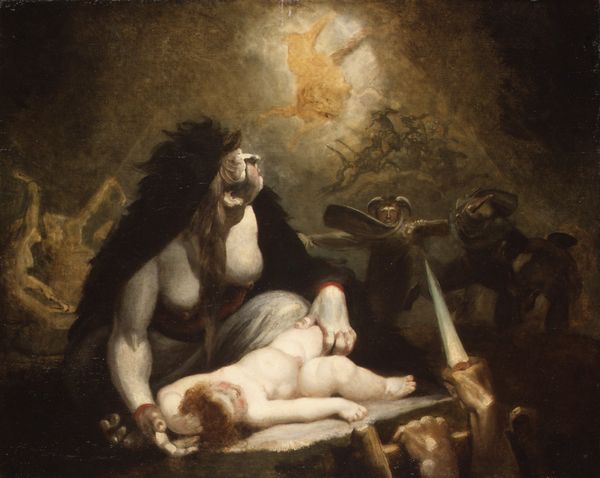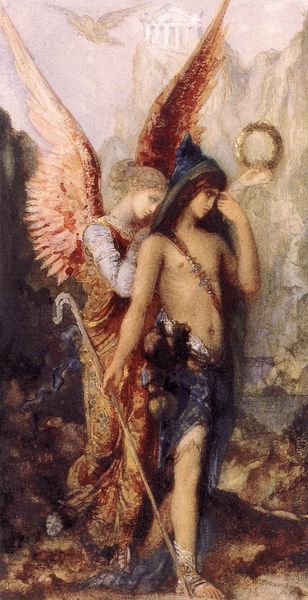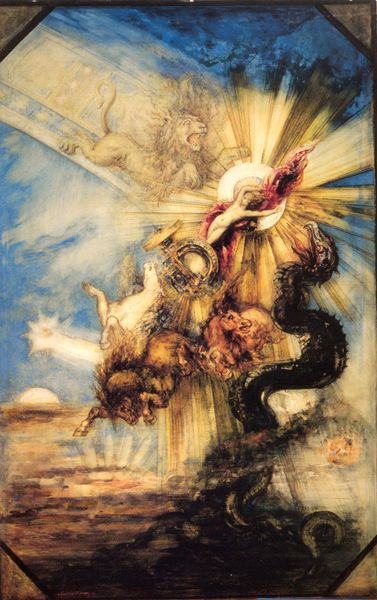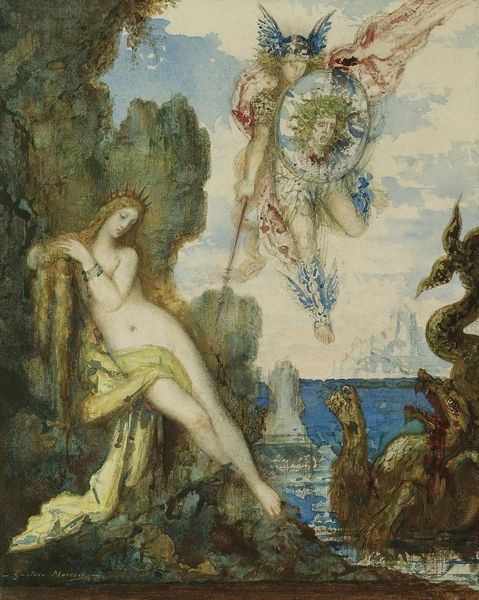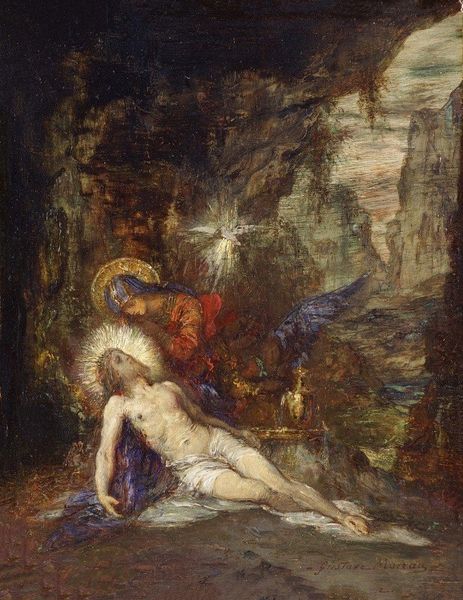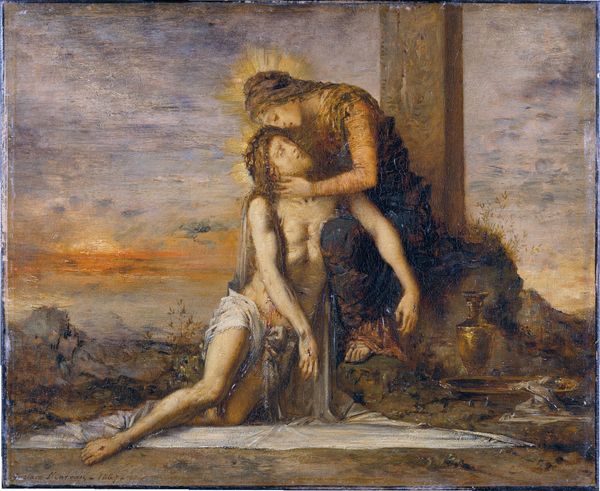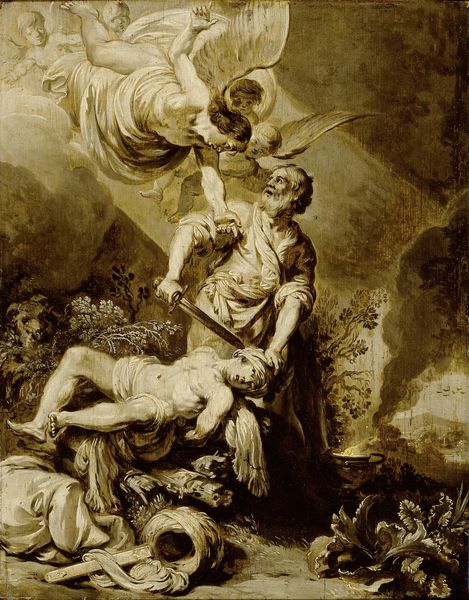
painting, oil-paint
#
allegory
#
painting
#
prophet
#
oil-paint
#
landscape
#
figuration
#
oil painting
#
roman-mythology
#
mythology
#
symbolism
#
history-painting
Copyright: Public domain
Curator: Here we have Gustave Moreau's "Jupiter and Semele," created in 1895. It's a truly striking oil painting residing here at the Musée National Gustave Moreau. Editor: The mood is instantly striking—suffocating almost. The figures emerge from this dark, almost muddy ground of color, lit in feverish shades. Curator: Moreau, steeped in symbolism, often used mythological subjects to explore themes of power, desire, and mortality. The painting depicts the mortal Semele with Jupiter, king of the gods. Semele, tricked by Hera, demands to see Jupiter in his divine form, which ultimately leads to her demise. Editor: What I find particularly fascinating is the materiality – the heavy, almost sculptural quality of the paint. Look at how Jupiter’s figure seems carved from stone, yet Semele is rendered with softer, almost ethereal brushstrokes. Curator: Indeed. Moreau rejected the realism championed by many of his contemporaries. He aimed to portray inner psychological states through his figures, which aligns him with the Symbolist movement, who wanted to present ideas through visual forms. Editor: The raw materiality almost works against the grandiose subject matter. I’m left wondering about Moreau's process—how the weight and manipulation of the oil paint were perhaps a physical way for him to wrestle with themes of divine power versus human vulnerability. This piece really pulls at the seams between craft and fine art traditions. Curator: Consider how the painting's themes of unattainable desires resonated with a society undergoing significant social changes, with shifting ideas around authority, the role of institutions, and the evolving political landscape. This painting challenges the establishment of art world by presenting the classical scene in a new light, inviting us to interrogate historical structures. Editor: It’s an incredible testament to the power of material choices. The thickness of the paint and those swirling colors work almost as metaphors themselves. Curator: It does offer us a window into a pivotal moment in art history. Moreau's work demonstrates a conscious rejection of academic conventions, a shift reflected in the society he observed and reacted to. Editor: Well, it definitely makes you think about the stories we tell, and the messy materials we use to tell them.
Comments
No comments
Be the first to comment and join the conversation on the ultimate creative platform.
